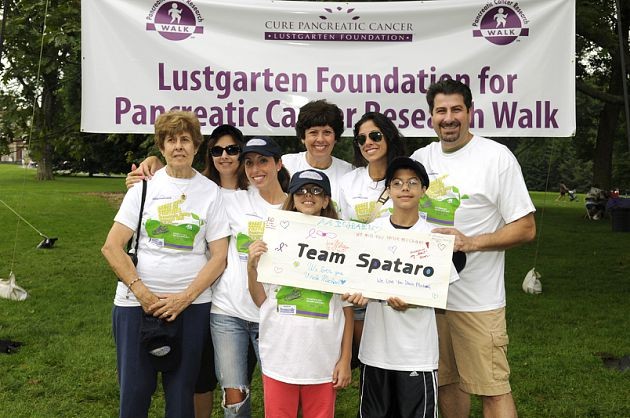Take a walk for pancreatic cancer
A tribute
“It was a pretty devastating thing for my entire family,” said his brother Paul, a 15-year East Meadow resident. “He made you feel like you were the most important person in the world.”
Spataro had less than one year to live from the day he was diagnosed. Like many pancreatic cancer patients, he was diagnosed late.
Paul Spataro was distraught after losing his brother, but targeted his grief and began to raise funds for the Lustgarten Foundation’s Pancreatic Cancer Research Walk.
“I went by myself the first year,” he said. “I met many people with similar experiences. It became very, very emotional.”
Since his first walk in 2004, Paul has returned each year, and each year more and more people come to support him.
He admits he was skeptical about fundraising for pancreatic cancer, since many charities use a portion of the money they raise to fund desk jobs, he said. However, he soon learned that 100 percent of the profits raised by the Lustgarten Foundation go directly to research.
Pancreatic cancer is the fourth leading cause of cancer deaths, said the foundation’s executive director, Kerri Kaplan. “Pancreatic cancer is severely underfunded,” she said. Less than 2 percent of the National Cancer Institute’s funding goes to pancreatic cancer research.
To date, the Lustgarten Foundation is the most successful pancreatic cancer charity, raising almost $1 million at the walk last year and more than $38 million since the charity was founded in 1998.
According to its website, donors have already raised $317,345 for this year’s Research Walk.
Dedicated to raising funds to support “research into the biological mechanisms and clinical strategies related to the prevention, diagnosis and treatment of pancreatic cancer,” the foundation also facilitates an enhanced dialogue between members of the medical community and increased public awareness.
“I do think that with all of the cumulative funding they get . . . it’s realistic that they can come up with the funds to develop early detection,” said Spataro.






